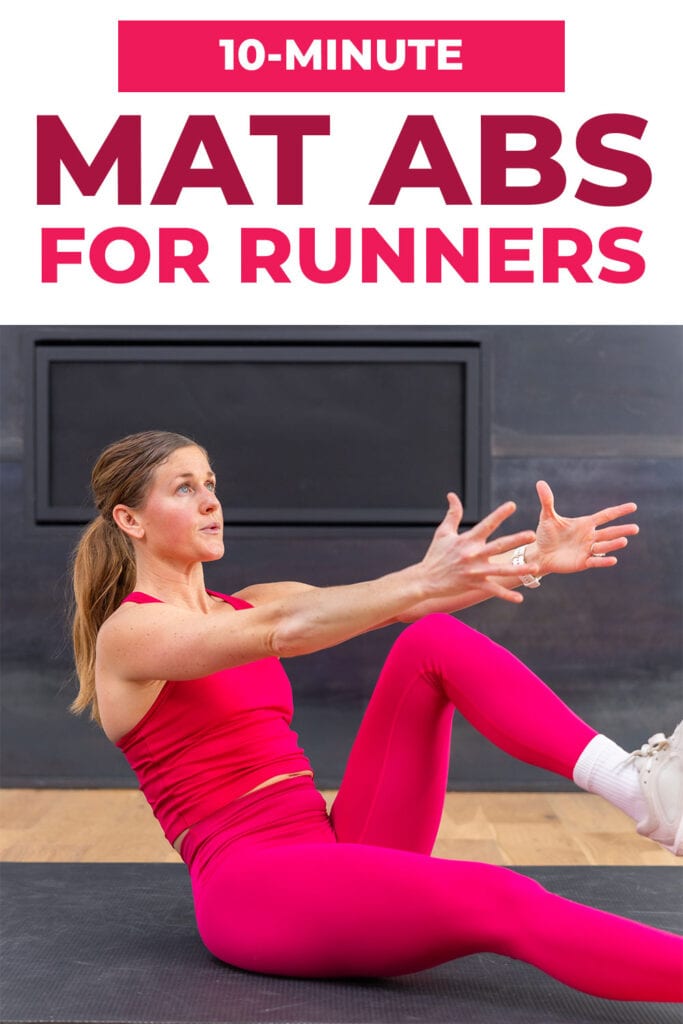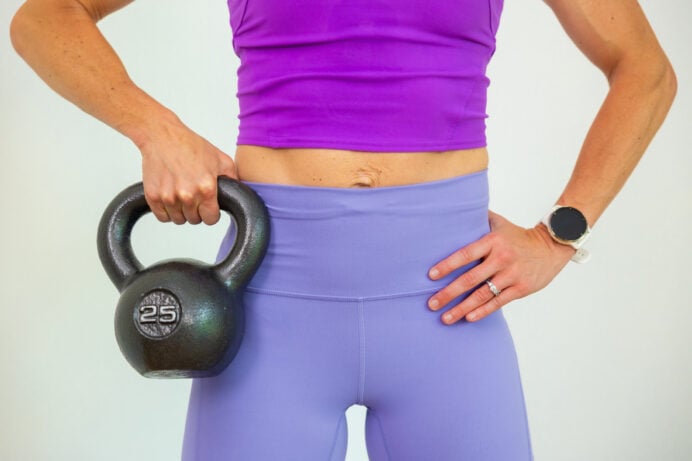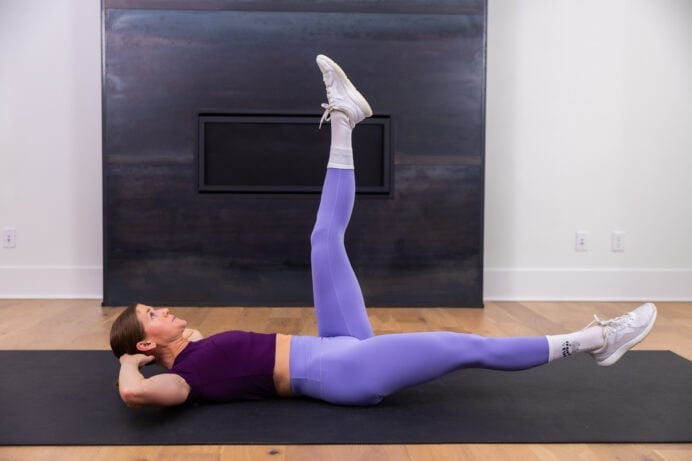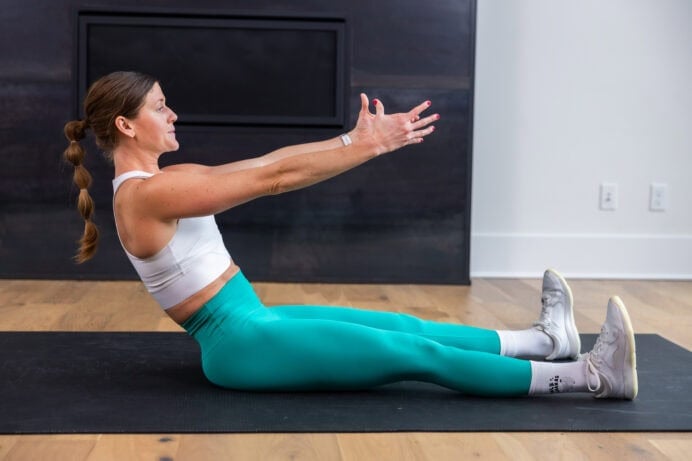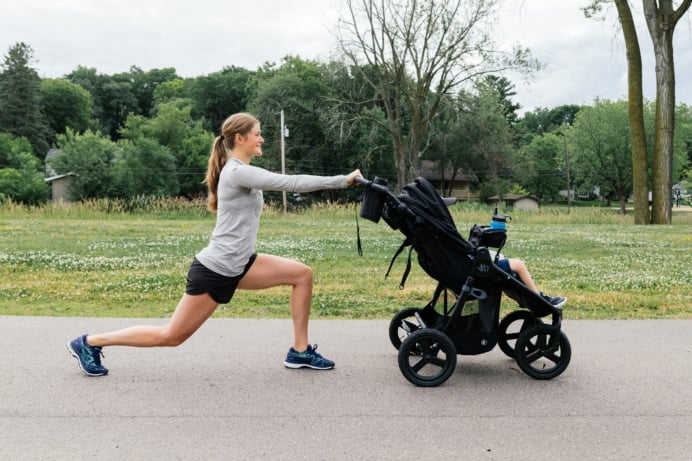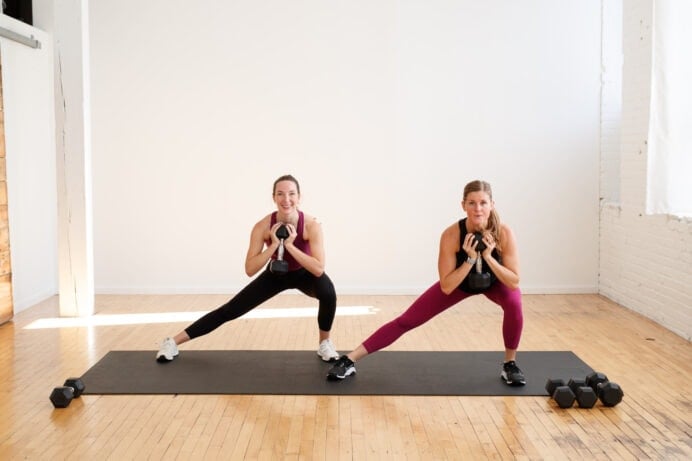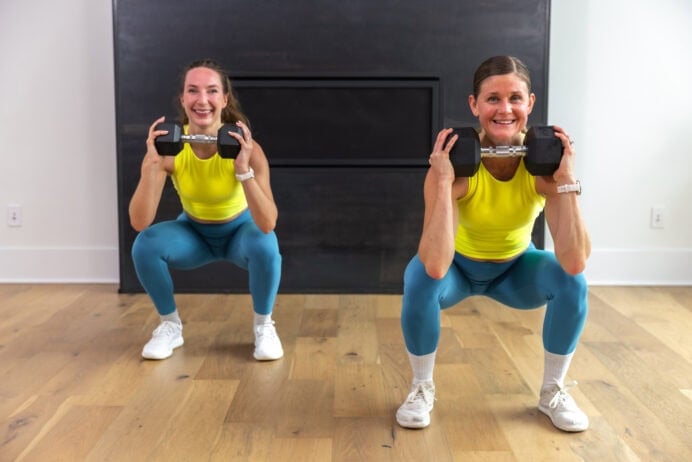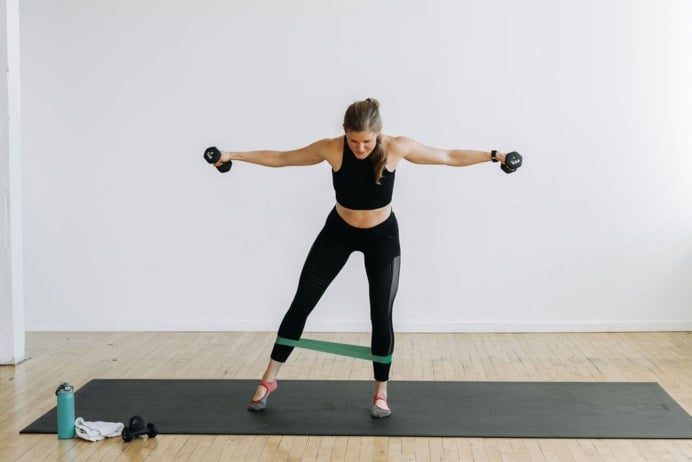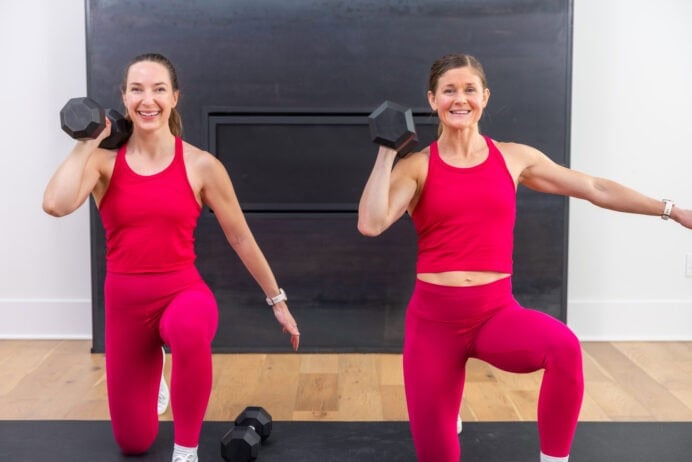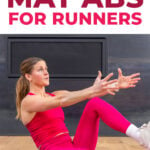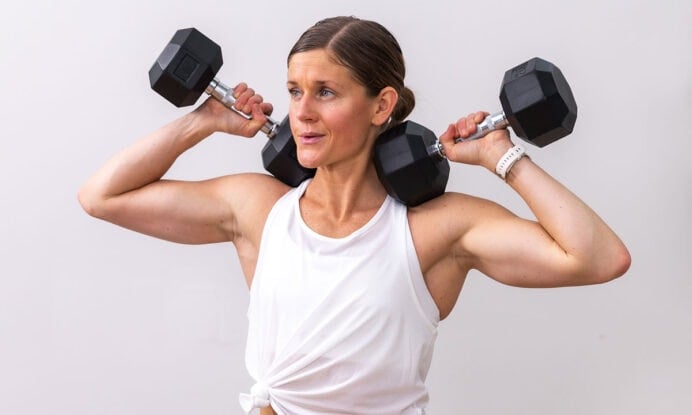
10-Minute Core Workout for Runners
Increase your power and stability with this no-equipment core workout for runners. A strong core provides the foundation for a powerful running stride. Increase stability and improve ab definition with classic core strength exercises: planks, dead bugs and glute bridges.
Ready to take your runs to the next level? As a runner, I can’t just do any old ab workout — my core needs specific attention if I want to run my best and stay injury-free.
Though you might traditionally think that runners need to strengthen their legs, core workouts are also really beneficial for runners. When you run, your body essentially pitches back and forth from left to right. Your abs and back muscles have to work to keep you balanced, upright and stable.
A strong core is the link between your upper body and lower body. It lets you transfer power efficiently with every running stride and helps you absorb the impact of running as you land.
When your core is weak, you’ll likely overcompensate in other areas of the body. You may put extra stress on your legs while running, which can lead to lower back pain, hip problems and knee issues.
I’ve found that the best core exercises for runners are those that feel like they’re mimicking the demands of running. The most effective core exercises should focus on keeping you stable and helping you control rotation.
A strong core improves your running form by keeping your pelvis and torso super stable, so you’re not wobbling all over the place. This means you can keep a more upright posture and have a smoother stride, which ultimately helps you run faster and more efficiently.
If you’re interested in combining strength training workouts with your running schedule, follow a strength and running workout plan.
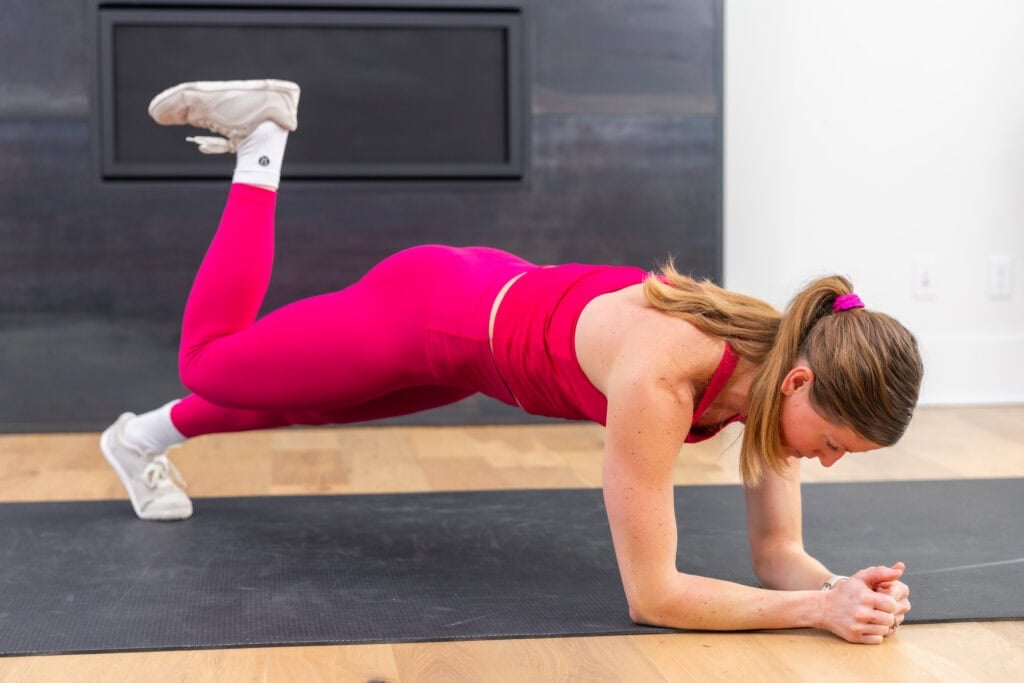
Workout Insights
Aim for at least two or three focused core routines each week. While running does engage your core, it’s important to add targeted core work to your strength workout routine to build the stability needed to run your best.
I’ve found that keeping rest periods short, like 20-60 seconds between sets, helps keep my core muscles engaged and builds endurance. This workout moves quickly and includes some of the best core exercises specifically designed to make you a stronger and faster runner.
If this is your first movement of the day, I recommend warming up with these mobility exercises.
Workout Equipment
No equipment needed for this bodyweight-only, mat ab workout.
Workout Instructions
Follow along with the guided Core Workout on YouTube, led by me — your certified personal trainer, Lindsey Bomgren.
Your Workout Looks Like This:
- 7 Core Training Exercises for Runners
- Timed Intervals (40 seconds of work, 20 seconds rest; complete as many reps as you can in the timed interval)
- Perform Each Exercise x1 Set (No Repeat)
Workout Outline
1. Single Leg Forearm Plank With Knee Drop
Targets: Transverse abdominals, upper abs, lower abs and shoulders.
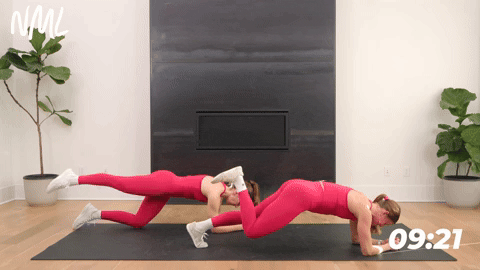
How to Do a Single-Leg Forearm Plank With Knee Drop
- Start in a tabletop position with shoulders stacked over wrists (soft bend in the elbows) and hips over knees. Drop down to your forearm so that your shoulders are stacked over your elbows and your hands are in front of you.
- Step both feet back to find a high plank position. Extend your legs long, balancing on your toes. Pull up on your kneecaps and push back on your heels to keep your core engaged. Body forms a straight line from your head through your heels.
- Lift the left leg off the mat, finding a three-point plank position. Bend the left knee so it forms a 90-degree angle.
- Slowly drop the right knee down to tap the ground. Hold for a moment, then reverse the movement by straightening through the right knee. Keep a strong core throughout; don’t dip into the right side as you perform the knee drops.
Modification: Find a three-point kneeling forearm plank. Omit the knee drop, keeping the right knee on the ground as you raise the left leg straight behind you.
2. Single Leg Glute Bridge
Targets: Glutes, hamstrings, hips, core and pelvic floor.
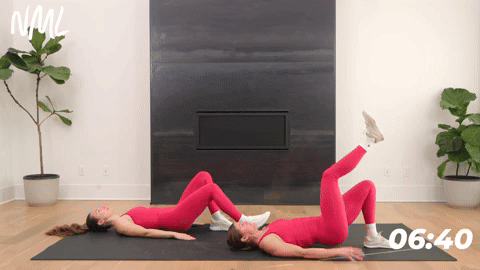
How to Do a Single-Leg Glute Bridge
- Lie on your back, feet hip-width apart. Your right foot is planted on the floor and your left foot is extended straight overhead (ankle stacked over knee). Your arms are either extended at your sides or straight overhead.
- Press through your heels to lift your glutes off the mat, squeezing your glutes as you lift. Think about keeping your core engaged and knees in line with your hips.
- Exhale, slowly lowering your hips to hover an inch above the mat, returning to the starting position.
Modification: Perform a “B-stance” glute bridge. Plant your right heel and step your left heel out slightly further away from your body, finding a staggered stance. Keep most of your weight in your right heel, left toes popped off the ground.
3. Runner Sit-Up
Targets: Abs, core and back.
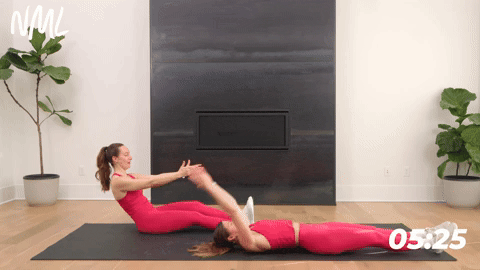
How to Do a Runner Sit-Up
- Start seated with your knees bent and your feet flat on the floor.
- Keeping your core engaged, lean your torso back to lay flat on the ground. Send your arms overhead and your legs long; your body forms a straight line.
- Explosively pull your torso back to an upright position to perform a sit-up while pulling your right knee toward your chest. Tap the left hand to the right toes.
- With control, lower back down to the mat.
- Repeat for the timed interval. Switch sides, alternating the leg that pulls in.
Modification: Stay seated and omit the sit-up, performing seated alternating knee drives.
4. Lying Leg Raises
Targets: Rectus abdominis, transverse abs and lower abs.
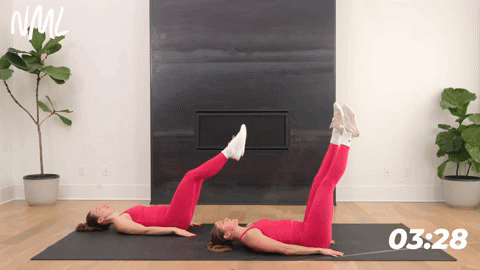
How to Do a Lying Leg Raise
- Lie on your back. Press your lower back firmly into the mat and think about wrapping your abdominal wall around your core.
- Straighten your legs and extend them over your hips, the bottom of your feet are facing the ceiling.
- Slowly lower the right leg towards the ground, keeping both legs as straight as possible. Focus on keeping your lower back pressed into the mat. Right heel should hover just above the ground.
- Keeping the right leg hovering a few inches above the mat, lower the left leg down towards the ground.
- With control, pull the left leg back up to the starting position. Then, pull the right leg back up to the starting position.
- Repeat, alternating the leg that first drops towards the ground.
Modification: Reduce the intensity of the exercise by performing alternating bent knee kick outs.
5. Dead Bug
Targets: Deep core muscles (transverse abdominis), lower abdominal muscles, hips, shoulders and back (posterior and anterior deltoids).
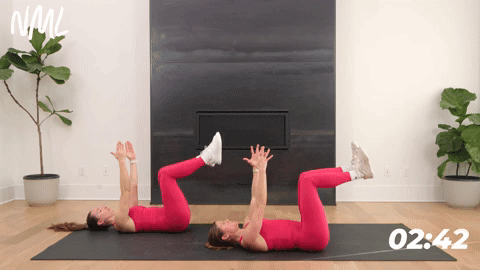
How to Do a Dead Bug
- Lie on your back flat on the floor, performing a slight pelvic tilt to press your lower back into the mat. Lift your knees to form a 90-degree angle (knees stacked on top of hips). Inhale, letting your belly expand.
- Exhale, engaging your core. Extend your left leg and right arm away from your body, lowering the right hand and left foot towards the ground with control. Left arm and right leg remain in place. With control, inhale as you return to center.
- Then repeat on the opposite side. Exhale as you extend your right leg and left arm away from the body, lowering the left hand and right foot towards the ground. With control, return to the starting position.
6. Bicycle Crunches
Targets: Rectus abdominis, transverse abdominal muscles and obliques.
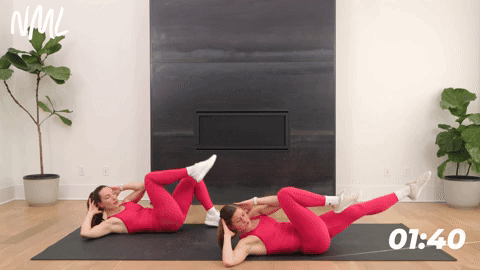
How to Do a Bicycle Crunch
- Lie flat on your back, lower back pressing firmly into the mat. Bring your legs to a raised 90-degree bend.
- Lift your head, neck and shoulders off the ground. Place your hands behind your head and think about pressing your head into your fingertips.
- Lift your right elbow towards your left knee as you extend your right leg long.
- Slowly return to the starting position and repeat on the other side. Pulling your left elbow towards your right knee as you extend your left leg long.
- Continue to repeat this ‘bicycling’ movement, alternating knee to elbow crunches.
Modification: Perform with knees bent, reducing the range of motion.
7. V-Sit Straight Leg Lifts
Targets: Transverse abdomen (deep abdominal muscle group below your rectus abdominis or six pack ab muscles), lower abs and hip flexors.
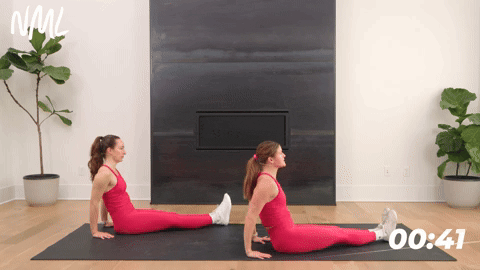
How to Do a V-Sit Straight Leg Lift
- Start sitting on your mat on your “sit bones,” legs out long in front of you, feet together.
- Pull your belly button towards your spine, then lean back about 45 degrees, activating your core.
- Slowly and with control, lift your right heel up in a half circle, imagining you are lifting your heel over a box next to your legs. Bring the right heel to tap the mat; feet are now wide.
- Repeat on the left, bringing the left heel up in a half circle before lowering it to tap the mat next to your right foot.
- Then reverse the motion, returning the left foot to the starting position.
- Repeat on the right, lifting the right heel up and over to return it to the starting position.
FAQs
Yes, a weak core can increase the risk of running-related injuries. Core stability can help you maintain proper form while running. This allows you to absorb impact and transfer force more efficiently during each stride. A weak core can cause your body to overcompensate, placing extra strain on other areas of the body and increasing your risk of injury.
The recommended duration for core workouts for runners is 10-15 minutes. Core workouts can be done multiple times per week, as a warm-up before runs, as a cool-down or on rest days. A strong core is important for injury prevention.
Effective core exercises for runners include side planks, mountain climbers, single-leg glute bridges, bicycle crunches and dead bugs. These exercises target the rectus abdominis, transverse abdominis, obliques and glutes, which are important for improving stability and power for running.
More Workouts
Abs + Core WorkoutsPin This Core Workout for Runners
